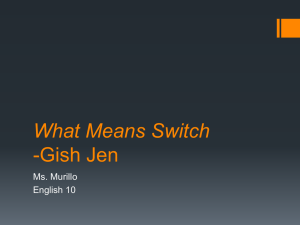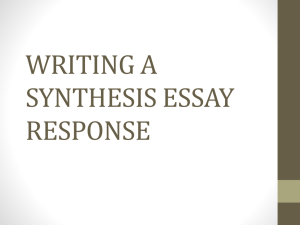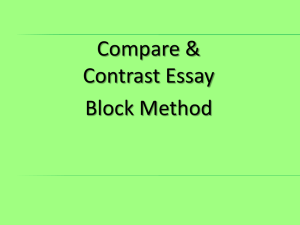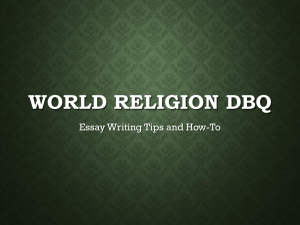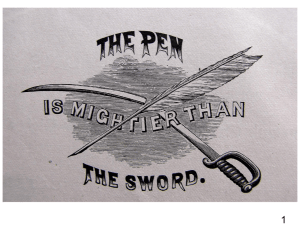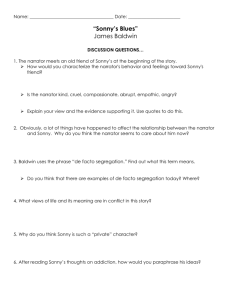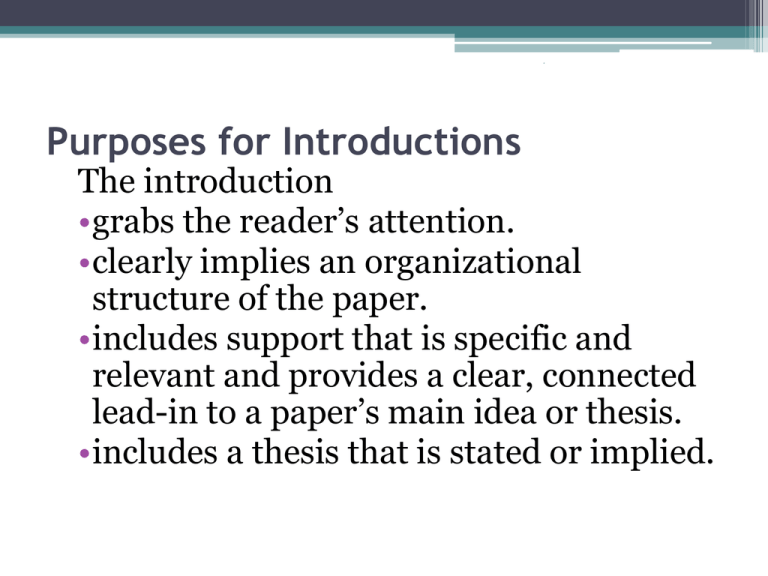
.
Purposes for Introductions
The introduction
•grabs the reader’s attention.
•clearly implies an organizational
structure of the paper.
•includes support that is specific and
relevant and provides a clear, connected
lead-in to a paper’s main idea or thesis.
•includes a thesis that is stated or implied.
Copyright 2006
Washington OSPI. All
rights reserved.
Ineffective Introductions
• I hope you enjoy…
• Hi, my name is…
• You are going to learn about…
• This essay/letter is about…
• I am going to tell you about…
• There are three reasons…
INTRO SENTENCE 1.
A HOOK
Copyright 2006
Washington OSPI. All
rights reserved.
▫
▫
▫
▫
▫
▫
▫
an anecdote or scenario
a quotation or dialogue
a brief history or overview
an interesting fact
a description
a question
taking a stand or making an announcement
▫
▫
▫
▫
▫
Ex: What is community?
Addiction is a very serious condition.
The 1960s were a turbulent time for African-Americans.
Leaving home may be the hardest thing for a person to do.
What happens if a person is torn between two homes?
INTRO SENTENCE 2.
• A SUMMARY
▫ In one brief sentence summarize the poem/story/play/topic
you are writing about.
▫ Ex: Community is a group of people living together.
▫ In Sonny’s Blues, the protagonist struggles with a drug addiction.
▫ Nikki Giovanni describes growing up black in this time period in her
poem Nikki-Rosa.
▫ Joan Didion explains her struggles letting go of family after her marriage
in her essay On Going Home.
▫ NOTE: YOU CAN HAVE 2 OR 3 SENTENCES OF SUMMARY,
BUT KEEP IT BRIEF!!!
Copyright 2006
Washington OSPI. All
rights reserved.
INTRO SENTENCE 3.
• THESIS STATEMENT!!
• The most important sentence in your entire essay.
• Review thesis statement guidelines if you are still unsure about
them. Remember the fill-in-the-blank formula!
• Ex: In James Baldwin’s short story Sonny’s Blues, Sonny’s drug addiction
demonstrates his desire to escape reality.
• In Nikki Giovanni’s poem Nikki-Rosa, the speaker illustrates that happiness
can be found in hardship through the rose imagery in the title, the
descriptions of facilities, and the emphasis on personal feelings.
• In Joan Didion’s essay On Going Home, the author’s inner struggle
demonstrates her fear of change and how she is stuck in the past.
.
Purposes for Conclusions
The ending/conclusion
• clearly connects introduction and body of
the paper with insightful comments or
analysis.
• Restates thesis
• wraps up the writing and gives the reader
something to think about.
Ineffective Conclusions
•
•
•
•
•
Copyright 2006
Washington OSPI. All
rights reserved.
I hope you enjoyed reading my…
In this essay/letter you have learned…
In conclusion,…
As you can see/tell…
I just told you about (exact thesis)…
Conclusion Strategies
A writer may end with
▫ an echo from the introduction
▫ a quotation or dialogue
▫ an anecdote or scenario
▫ an interesting fact
▫ a prediction
▫ a question
▫ a call to action
▫ a generalization from given information
▫ a self-reflection
▫ a response to a “so what?” question
▫ a combination from this list
CONCLUSION SENT 1:
Restate thesis in different words.
Copyright 2006
Washington OSPI. All
rights reserved.
CONCLUSION SENT 2:
Summarize your argument in one
sentence.
CONCLUSION SENT 3:
Leave reader with an interesting
idea/statement/generalization
Copyright 2006
Washington OSPI. All
rights reserved.
• Sonny deals with addiction to run away from his
problems. The story shows this through POINT
1, POINT 2, POINT 3. Baldwin leaves the reader
with a happy ending though; Sonny is fighting
his addiction and focusing instead on his music.
• Compare sent 1 with thesis:
• In James Baldwin’s short story Sonny’s Blues,
Sonny’s drug addiction demonstrates his desire
to escape reality.
• Intro goes from BROAD to SPECIFIC
Intro - Broad
Intro – specific THESIS
Conclusion – specific –
RESTATE THESIS
Conclusion - Broad
• Conclusion goes from SPECIFIC to BROAD





